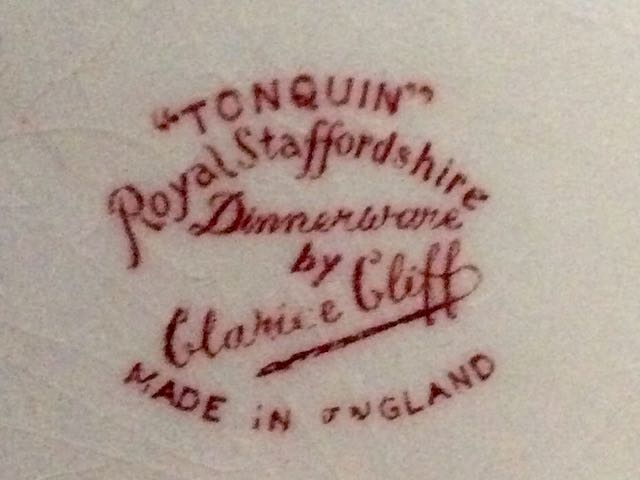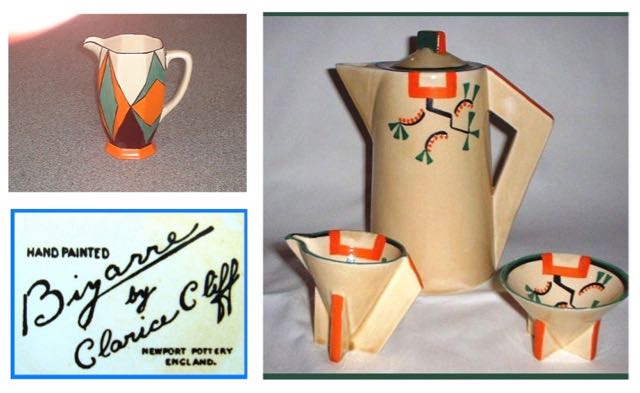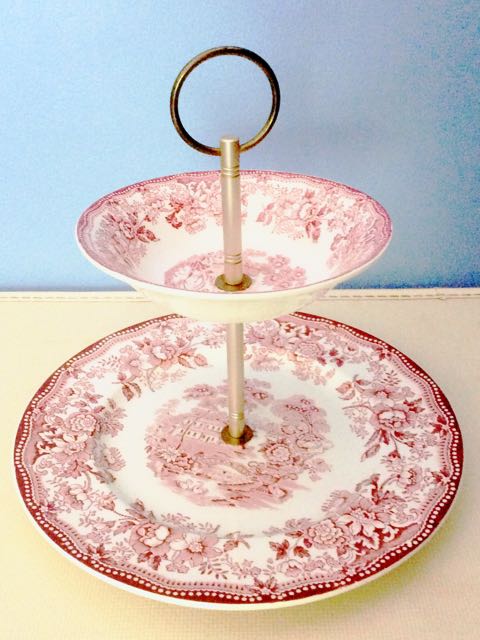It’s always a sweet pleasure to find something with a rich backstory and, indeed, one unfolded when I found this vintage tiered stand at a local thrift store. The striking red and white scenic pattern caught my eye as I glanced down the filled shelves. My heart skipped a beat as I picked it up. No cracks or chips – what a nice surprise! I looked for the mark underneath and read a name I’ve never heard before – Clarice.
With the slight crazing visible from the bottom and the unique mark, I knew I found something with an interesting tale – and, as it turns out, it’s the history of an incredibly creative English designer, Clarice Cliff, who made her mark in the pottery world during the Art Deco era of the 1920s-1930s. As I admired the beautiful scene on this pattern, I expected to discover more delicate creations of Clarice’s but her more popular pieces are much more interesting!

According to Wikipedia, Clarice was born in 1899 in Tunstall, Stoke-on-Trent, the heart of England’s pottery industry. She started working as a potter at age 13 and by age 25, Clarice was creating a new line of pottery known as Bizarre Ware with bright, striking colors and unique lines.

During the late 1920s and through the thirties, Clarice enjoyed much success and produced many different bright, colorful, and angular patterns, now highly collectible Art Deco pieces, including Honolulu and Melon. Production took a turn with onset of WWII, and English potteries were allowed to produce only white tableware. Following the war, the market returned to the traditional English patterns, which is when Tonquin was manufactured for the overseas market, including the United States.
After the war, although Cliff was occasionally nostalgic for the ‘Bizarre’ years, as witnessed in personal letters to friends, she seemed to be realistic and accepted the commercial taste was for conservative ware. Clarice seemed to enjoy playing a lesser role at the factory, knowing that she could not recapture those crazy days of the thirties.[20] Much of the post-war production went to Australia, New Zealand or North America, where the taste was for formal ware in traditional English designs such as Tonquin[21] rather than the striking patterns and shapes that had established Cliff’s reputation; thus she was never to return to creative work. – Wikipedia
From bizarre to bucolic, Clarice Cliff demonstrated an incredible range of talent during her lifetime, and although she was marginally recognized for her creative genius at the time, today she stands as a major artist of her time. To learn more about her life and work, check out the following sites. And, if you see a “bizarre” piece of pottery on the shelf, look underneath for her name – if it’s there, that would truly be a find!
Learn more about the amazing Clarice Cliff!
Wikipedia – Clarice Cliff
Inside Out – Clarice Cliff
Clarice Cliff
Clarice Cliff Facebook
_____________________________________________________________


